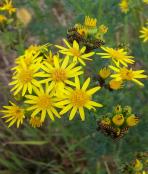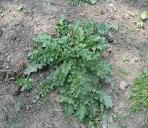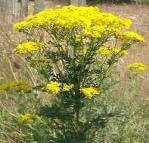


Summer comes with a yellow warning
We’ve had a very typical Great British summer so far, haven’t we? A little bit of sunshine and plenty of showers! Other than not knowing whether we’re coming or going with the fluctuating temperatures – not to mention masks, social distancing and everything else we have to think about – the mix of wet and dry weather has caused everything to grow like mad, including the dreaded ragwort.
The British Horse Society recently issued a warning across the UK that ragwort levels are worryingly high due to the excess rain. Ragwort contains toxic compounds, which can cause irreversible liver damage to horses and ponies. Even more worrying, horses don’t tend to show symptoms until their liver is up to 70% damaged.
So make sure you check your fields regularly for any sign of ragwort and safely pull up and dispose of it before it spreads any further. We’re lucky enough to occupy 40 acres of Essex countryside here at Remus and love our wildlife areas, which encourage plant life and all sorts of critters, yet we still have to be ever so vigilant throughout the year to keep our fields safe for all.
Read more about the BHS ragwort warning here: www.yourhorse.co.uk/news/bhs-ragwort-warning
If you would like to make a donation to support the work we do and contribution we make to animal welfare, you can do so via our website. The link details the many different ways you can make a donation, whether online, post or telephone.
And, if you’ve not yet signed up for our latest fundraiser, here’s the link: donate.giveasyoulive.com/campaign/-remus-reservoir-challenge.
The Battle with Ragwort
As pretty as it looks, Ragwort can give landowners and horse owners alike a real headache. We’ve all heard about it, but how much do you really know about its part in the world?
Ragwort contains toxic compounds, which can cause irreversible liver damage to horses. This can happen if it’s eaten fresh, but also dry in hay or haylage, so it’s important to check any hay you’re feeding, as well as your fields. The plant flowers from May to October and there has been a lot of talk in the news over the last couple of months about just how rampant Ragwort is becoming across the UK.
While we obviously want to keep our fields clear of Ragwort for our horses’ wellbeing, under the Weeds Act of 1959, the occupier of the land is actually legally responsible for clearing it. Visit the government website for the latest guidance on how you can safely help stop Ragwort from spreading: www.gov.uk/guidance/stop-ragwort-and-other-harmful-weeds-from-spreading.
Conservation is extremely important to us at Remus. We occupy 40 acres of Essex countryside and actively develop small areas of land and corridors of conservation to benefit plant life and wild creatures. Did you know the cinnabar caterpillar feeds on Ragwort? It’s actually their favourite food! So while we’re certainly not anti-wildlife, it is important that we follow the right guidance to keep our paddocks and grazing land safe for everyone.
There is a helpful Q&A all about Ragwort on the Horse & Country website: https://horseandcountry.tv/en-us/ragwort-horse-owner-know/.
Ragwort: Be alert!
Spring has sprung and everywhere is looking very green – and yellow! The oilseed rape makes for some stunning scenery this time of year, but there is another, more sinister yellow plant about to make its annual appearance, ragwort.
Ragwort contains toxic compounds which, if eaten, can cause irreversible liver damage to horses. This can happen if it’s eaten fresh, but also dry in hay or haylage, so it’s important to check fields before making hay.
It’s usually found growing on roadside verges and wasteland but is spreading more and more to grazing land. Although it has a bitter taste, horses will eat it if there is nothing else available – and when it’s dry in hay, it’s very hard for horses to tell it’s toxic.
Ragwort starts flowering from May through to October, so do keep your eyes peeled for signs of the plant in your own fields and out and about. Horses left in fields of ragwort, due to cruelty or just ignorance, are at risk, so report any situations you’re concerned about.
There was a story in Horse & Hound about a pony who was rescued after being dumped. About four months into enjoying his new home, he had to be put down due to liver disease, presumably from exposure to ragwort in his earlier life. The owners are now trying to raise awareness of this ‘silent assassin’.
So take action today and let’s stop ragwort from taking any more innocent lives. If you’d like more information, visit the British Horse Society website.
Be Ragwort Aware and Save a Horse’s Life
Remus Horse Sanctuary works hard all year round to help horses that have been abandoned, neglected and badly treated – but at this time of year, even the best-loved horses can be at risk.
The threat to their health is a seemingly harmless yellow-flowered weed called Ragwort. Seen all around the countryside at this time of year, along roadsides and railways, it can cause liver damage if horses eat it – and can be fatal.
Horse owners must keep Ragwort aware and get rid of any weeds that appear in their field – but all landowners and tenants have a duty of care to ensure that Ragwort is not growing near fields where horses graze.
Find out more about how to identify this dangerous weed and how to get rid of it in this Hertfordshire Life article.
You can also refer to other articles that we have written on the subject here and view DEFRA’s advice here.
Ragwort Poisoning
It’s that time of year again, when we need to bring to your attention the perils of Ragwort. Already we are seeing fully-grown stems. Did you realise that Ragwort is poisonous to horses, cattle and other animals, causing stomach pain, breathing difficulties, blindness and potentially death?
Please look out for this yellow plant and eradicate it from any fields where your horses graze.
What is Ragwort?
Ragwort (Senecio spp.) is a poisonous yellow-flowered weed that damages the liver. The effects can build up over a length of time, so even if a horse only eats small amounts this can build up, having disastrous effects – they can also become extremely ill from eating large quantities.
Ragwort can be found on uncultivated ground and in fields across the country. The seedlings appear in the Autumn, rosettes in the Spring, followed by the mature plants from May to October, and they can reach up to 2m in height.
Ragwort may also find its way into hay, so owners need to be particularly vigilant when feeding their animals.
How to deal with it
The Ragwort plants need to be carefully disposed of – burning is most effective – but it is best to speak to DEFRA for advice. You can view and download their useful PDF here.
- All plants must be removed.
- Remember Ragwort can be harmful to humans too, so cover arms and legs and use gloves when pulling it up out of the field, and avoid inhaling the pollen.
- The most effective way to remove Ragwort is to pull the plant up from the roots – special tools are available to help to remove roots.
- It is also possible to spray the area – agricultural merchants will be able to advise on suitable products.
Please note that fields and paddocks must be ‘rested’ before the horses can go back onto them – and, of course, all dead plants must be removed.










